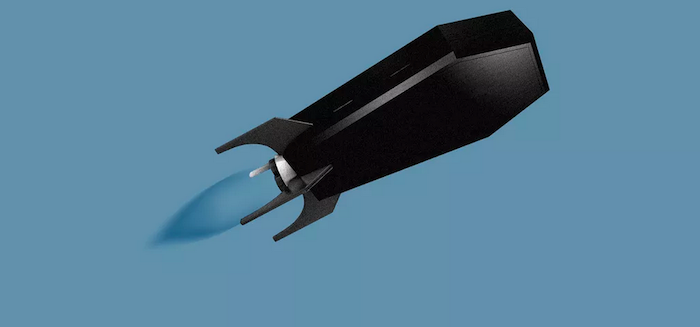
By Jessie Li
Modern burials and death practices are changing how we die and where our bodies go after we die.
Why it matters: Today, the funeral industry is worth $17 billion ($). Businesses are innovating on traditional practices, and more people are taking control of how they wish to die and be buried — in unconventional, surprising and even extraterrestrial ways.
It now ends with most of us getting turned into dust and obituaries posted online. Some new burial practices and places include:
Orbit in outer space. SpaceX recently launched the cremated remains of 152 people on its Falcon Heavy rocket. A company called Celestis facilitated these “funeral flights,” charging over $5,000 for 1 gram of “participant” ashes.
Transformation into a diamond. Engineers can turn the carbon from human ashes into diamonds that are physically and chemically identical to natural diamonds.
Green burial. Touted as an environmental and financially friendly option, green burials can be as simple as wrapping a body in a cotton shroud and lowering it to the ground — factoring out conventional vaults, coffins and embalming.
Green cremation. Instead of using flame, green cremation uses heated water and an alkali solution to accelerate the natural decomposition of the body.
Celebration of life ceremony. In lieu of a somber funeral, an end-of-life ceremony celebrates a person’s life and legacy, often with a dedicated event planner, a speaker and activity lineups.
Digital tombstones: One Slovenian cemetery is experimenting with digital tombstones that can show pictures and video, and potentially link to a smartphone application for interactivity.
Smart library. One Tokyo crematorium allows you to summon ashes with the swipe of a card: A machine transports the ashes from an underground vault through a conveyor belt to the right room.
Pet burial. “Togetherness Resting Places” reunite humans and pets “when the time comes.”
Memorial reef. Florida-based company Eternal Reefs mixes ashes with “reef ball” material, creating memorial reefs that can serve as habitats for sea life.
Living wake. Some people are attending their own funerals ahead of death — by holding a “living wake,” offering family and friends a chance to say goodbye.
Live-streamed funerals. An estimated 20% of funeral homes offer livestreaming, allowing those who can’t make it to a funeral to share the experience — and those who’ve attended to look back on it.
Disney World. About once a month, Disney employees clean up scattered remains ($) in the park, where visitors sneak in ashes to disperse at Cinderella’s castle, on the Pirates of the Caribbean ride and throughout the Haunted Mansion.
Complete Article ↪HERE↩!

